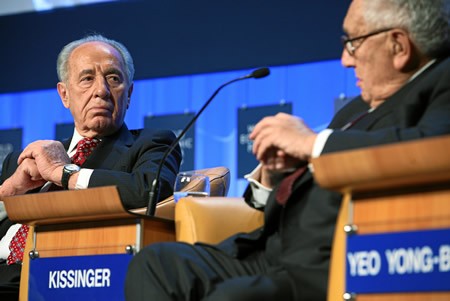Sovereign Wealth Funds Friend Or Foe
Post on: 11 Апрель, 2015 No Comment

A sovereign wealth fund (SWF) is an investment fund managed by a government agency on behalf of a nation or sovereign state. SWFs (or “sovereign funds”) generally have a mandate to invest globally in any asset class – stocks, bonds, commodities, currencies, real estate, etc. SWFs have grown substantially in size, with total assets as of September 2013 amounting to $5.857 trillion, an increase of almost 80% from $3.265 trillion in September 2007. This enormous pool of capital gives SWFs a great deal of clout in financial markets. Since the majority of SWFs are located in the Middle East and Asia, whether these largely opaque entities are friends or foes of the nations where they invest has been the subject of hot debates from time to time.
Before wading into the “friend or foe” debate, one needs to understand the rationale for establishing SWFs and the common features that many of them share.
Most SWFs have been created by resource-rich and export-oriented nations to (a) diversify their total revenue base and hedge export revenues from energy and commodity price volatility. and (b) accumulate savings for future generations, since resources are depleting assets that will shrink to zero over long periods of time.
According to the Sovereign Wealth Fund Institute, SWFs that have been funded by oil and gas revenues accounted for 59% of the total as of August 2013, while non-commodity and other SWFs comprised the 41% balance. Funding sources for SWFs include balance of payment surpluses, official foreign currency operations, privatization proceeds, fiscal surpluses and resource exports.
Most SWFs have a number of common elements – they are almost always state-owned, generally have few liabilities and are either heavily or entirely invested in foreign assets. Most SWFs therefore have unusually long investment horizons (since they are investing for future generations), while the absence of specific liabilities means they can also take on more risk than the typical pension fund. which is another sovereign investment vehicle.
Major Players
The following list indicates the top 10 SWFs by assets as of September 2013:
- Government Pension Fund – Global (Norway) — $737.2 billion
- SAMA Foreign Holdings (Saudi Arabia) — $675.9 billion
- Abu Dhabi Investment Authority — $627.0 billion
- China Investment Corp. — $575.2 billion
- SAFE Investment Co. (China) — $567.9 billion
- Kuwait Investment Authority — $386.0 billion
- Hong Kong Monetary Authority Investment Portfolio — $326.7 billion
- Government of Singapore Investment Corp. — $285 billion
- National Welfare Fund (Russia) — $175.5 billion
- Temasek Holdings (Singapore) — $173.3 billion

Source: Sovereign Wealth Fund Institute
This list enables several conclusions to be drawn about the SWF sector’s composition:
- While SWFs numbered about 70 as of September 2013, most of their assets were concentrated in the hands of a few funds. The top five SWFs accounted for 54% of total SWF assets, while the top 10 comprised 77% of total assets.
- SWFs vary widely in size, ranging from Norway’s gargantuan Government Pension Fund – global with almost $750 billion in assets – to small SWFs operated by Ghana and Equatorial Guinea with less than $100 million in assets.
- Major trends in the global economy can be detected by looking at the year when some of these SWFs were established. The 1970s and 1980s, as well as the first decade of this millennium, witnessed the formation of a number of sovereign funds in the Middle East thanks to surging oil revenues. In the 1990s and 2000s, China set up a number of SWFs as export revenues and its foreign currency reserves soared.
- Asia accounted for 40% of SWFs by assets as of September 2013, while the Middle East made up 35% and Europe 17%. The Americas and Africa comprised 3% each.
- Why does the U.S. barely register on the list of SWF heavyweights? Some reasons include the fact that the U.S. has run huge trade and current account deficits for many years, and it does not have spare funds to allocate to sovereign funds. Additionally, since the dynamic U.S. corporate sector already invests heavily overseas with a great deal of efficiency, the U.S. does not need separate sovereign funds to do so.
So – Friends or Foes?
The origin of 75% of SWFs from the Middle East and Asia sometimes causes concern about their real motivations when investing in assets in North America and Europe, since the interests of the former may not always be aligned with those of the latter group. We summarize below key points for both the friends and foes cases.
- SWFs have enormous pools of capital that can be used to turn around troubled companies. In the case of a corporate turnaround, SWF funds may save hundreds or thousands of jobs that would be lost if one or more troubled companies slide into bankruptcy. A prime example of positive SWF involvement is the billions of dollars that were pumped into flailing financial giants such as Citigroup and Merrill Lynch from China and Kuwait during the global credit crunch of 2008.
- SWFs can also help develop assets that need substantial capital. In a world where investment capital is getting increasingly scarce, SWF funds remain an attractive funding source.
- SWFs are typically passive investors who are in for the long haul. Their global reach may also help break down trade barriers and foster international trade.
- Foreign government control is one of the major concerns about SWFs. The threat of critical know-how and knowledge being exported to unfriendly nations is a real one, since SWFs can exploit their position as large or majority shareholders. The U.S. is particularly cognizant of the vulnerability of its industries to the outright theft of their trade secrets, given the dramatic increase in industrial espionage and cyber-attacks conducted against leading U.S. companies by overseas entities.
- Lack of transparency is another major concern. Many SWFs do not divulge key information such as their holdings, investment objectives, performance and so on. This opacity only serves to increase trepidation about their true investment motives.
More Transparency is the Key
Increased transparency may lead to a greater comfort level about SWFs in nations where target companies are located. The Sovereign Wealth Fund Institute published the chart below, which shows the level of transparency and strategy (active or passive) for most of the major SWFs. The size of each circle indicates the SWF size in terms of its assets, while its relative position on the X-axis denotes the degree of transparency – the farther out a fund is on this axis, the higher the degree of transparency.
Not surprisingly, the SWFs with the greatest amount of transparency are those from nations with a well-established securities regulatory regime, such as Norway, Ireland, Australia, South Korea and Singapore. Conversely, SWFs with the lowest degree of transparency are from Algeria, China, the United Arab Emirates and Saudi Arabia.
Rising Concern About Foreign Takeovers
Over the years, concern about takeovers by foreign state-owned enterprises (SOEs) suggests that SWFs may not be able to acquire prime assets in the Western world without encountering stiff opposition.
For instance, in October 2013, the Canadian government unexpectedly rejected the sale of Manitoba Telecom’s Allstream division – which operates a national fiber-optic network that provides telecommunications services to businesses and governments – to a company controlled by Egyptian billionaire Naguib Sawiris, because of national security concerns. In December 2012, the Canadian government had approved the takeover of two Canadian energy companies – Nexen and Progress Energy – by SOEs based in China and Malaysia, but said that future acquisitions of Canadian oil-sands businesses by foreign SOEs would only be approved in exceptional circumstances.
In the United States, foreign takeovers must be cleared by the Committee on Foreign Investment in the U.S. (CFIUS). American opposition to foreign takeovers has been sporadic but spirited. For example, in October 2013, the takeover of pork producer Smithfield Foods by a Chinese company faced some opposition. The U.S. rejection of China National Offshore Oil Co.’s attempt to buy Unocal in 2005 is often cited as one of the leading examples of American intent to protect strategic assets from falling into foreign hands.
The Bottom Line
SWFs have an important role to play as a key source of investment capital in this age of globalization. But while cash-strapped Western nations may still welcome SWF investment, they are likely to do so only on their own terms, and certainly not for strategic assets.














